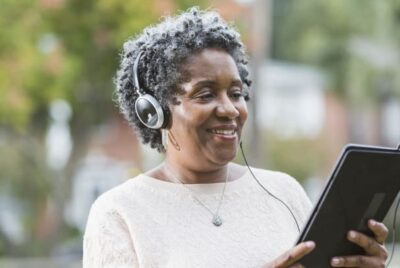Creating a Senior-Friendly Fitness Routine
Creating a Senior-Friendly Fitness Routine: Chair Exercises and Low-Impact Workouts
As we age, staying physically active becomes increasingly important for maintaining our health and mobility. However, it’s common for seniors to face challenges that may make traditional exercise routines difficult. That’s where chair exercises and low-impact workouts come into play. These senior-friendly fitness routines can help you stay active, improve your strength and flexibility, and enhance your overall well-being.

The Benefits of Chair Exercises and Low-Impact Workouts
Before we dive into specific exercises, let’s explore why chair exercises and low-impact workouts are excellent choices for seniors:
1. Gentle on Joints: As we age, our joints may become less flexible and more prone to discomfort. Chair exercises and low-impact workouts are gentle on the joints, reducing the risk of injury.
2. Improved Balance: These exercises can help seniors improve their balance and stability, reducing the risk of falls.
3. Convenient and Accessible: You can perform these exercises in the comfort of your own home, using a sturdy chair as your primary equipment. No need for expensive gym memberships or fancy equipment.
4. Suitable for All Fitness Levels: Whether you’re a beginner or have been active for years, chair exercises and low-impact workouts can be adapted to your fitness level and goals.
Getting Started: Chair Exercises
1. Seated Marches: Sit at the edge of a sturdy chair, feet flat on the floor. Lift your knees one at a time, as if you’re marching in place. This exercise improves leg strength and circulation.
2. Chair Squats: Stand in front of the chair with your feet hip-width apart. Lower yourself gently into a sitting position without actually sitting down. Then, stand back up. This strengthens your leg and buttock muscles.
3. Seated Leg Lifts: Sit tall in the chair with your back straight. Extend one leg straight out and hold for a few seconds before lowering it. Alternate legs. This exercise targets the quadriceps and helps with hip flexibility.
4. Seated Side Leg Raises: While sitting, lift one leg to the side and hold for a few seconds before lowering it. This exercise works on hip and outer thigh strength.
5. Seated Arm Raises: Sit comfortably, holding a light weight in each hand. Lift your arms out to the sides and then back down. This exercise improves shoulder strength and posture.
Low-Impact Workouts for Seniors
1. Walking: A low-impact exercise that can be done indoors or outdoors. Walk at your own pace to improve cardiovascular health and leg strength.
2. Swimming: Swimming or water aerobics are fantastic low-impact options that provide resistance and improve overall fitness without stressing the joints.
3. Tai Chi: This ancient Chinese practice focuses on slow, flowing movements that improve balance, flexibility, and mental well-being.
4. Yoga: Many yoga classes offer gentle and chair-based yoga sessions that enhance flexibility, strength, and relaxation.
5. Stationary Cycling: Riding a stationary bike is an excellent way to get your heart rate up without putting strain on your joints.
Training for Seniors: Building a Strong Foundation for a Healthy Life
Training isn’t just for bodybuilders or athletes; it’s a crucial component of a healthy lifestyle, especially as we age. For seniors, maintaining and even increasing muscle strength can lead to numerous physical and mental health benefits. In this article, we’ll delve into the importance of strength training for seniors, the benefits it offers, and how to get started.
The Importance of Strength Training for Seniors
As we age, we naturally lose muscle mass and bone density. This process, known as sarcopenia, can lead to reduced mobility, increased risk of falls and fractures, and a decline in overall quality of life. Strength training, also called resistance training, can help combat these issues by:
1. Building Muscle Mass: Strength training stimulates the growth of muscle fibers, helping to offset the natural loss of muscle that occurs with age. This results in improved strength and functional capacity.
2. Increasing Bone Density: Weight-bearing exercises, a subset of strength training, can increase bone density and reduce the risk of osteoporosis and fractures.
3. Enhancing Metabolism: Building and maintaining muscle mass can boost your metabolism, making it easier to manage your weight and maintain a healthy body composition.
4. Improving Balance and Coordination: Strength training exercises that focus on core stability and balance can help seniors prevent falls and injuries.
5. Enhancing Joint Health: Properly executed strength training can help maintain joint health by supporting the muscles and ligaments that surround them.
Benefits of Strength Training for Seniors
Strength training offers a wide range of benefits for seniors, both physically and mentally:
1. Increased Strength: Improved muscle strength allows seniors to perform daily tasks with greater ease, from carrying groceries to getting out of a chair.
2. Enhanced Mobility: Strength training can increase flexibility and range of motion, making it easier to move and perform activities.
3. Better Bone Health: Weight-bearing exercises can increase bone density, reducing the risk of fractures and osteoporosis.
4. Weight Management: Building muscle can boost metabolism, helping seniors maintain a healthy weight and body composition.
5. Improved Posture: Strength training exercises that target the back and core muscles can lead to better posture and reduced back pain.
6. Enhanced Mood: Regular exercise, including strength training, can release endorphins, which can help reduce symptoms of depression and anxiety.
7. Cognitive Benefits: Some research suggests that strength training may have cognitive benefits, such as improved memory and cognitive function.
Getting Started with Strength Training
Before embarking on a strength training program, it’s essential to consider your current fitness level and any underlying health conditions. Here are some tips for getting started:
1. Consult Your Healthcare Provider: Talk to your doctor before starting any new exercise program, especially if you have health concerns or chronic conditions.
2. Start Slowly: If you’re new to strength training, begin with light weights or resistance bands. Focus on proper form and technique to prevent injury.
3. Choose a Variety of Exercises: Incorporate exercises that target different muscle groups. Include both upper and lower body exercises.
4. Set Realistic Goals: Whether it’s improving your ability to climb stairs or lifting a certain weight, setting achievable goals can help motivate you.
5. Consistency is Key: Aim for at least two days of strength training per week, allowing for adequate rest between sessions.
6. Listen to Your Body: Pay attention to how your body responds to exercise. If you experience pain or discomfort, stop and consult a professional.
7. Consider Working with a Trainer: A certified fitness trainer with experience in senior fitness can provide guidance and ensure you’re using proper form.
Strength training is a valuable tool for seniors looking to maintain their health, mobility, and overall quality of life. It offers a wide range of physical and mental benefits, and it’s never too late to start. By consulting with your healthcare provider, starting slowly, and remaining consistent, you can build a strong foundation for a healthier and more active life as a senior. So, grab those weights or resistance bands and start reaping the rewards of strength training today. Your body will thank you for it! Buy AG1 Athletic Greens for better health.
Low-Impact Swimming Ideas for Seniors
Swimming is often considered one of the best exercises for seniors due to its low-impact nature and numerous health benefits. It’s an enjoyable and effective way for older adults to stay active, improve cardiovascular fitness, and maintain overall well-being. In this article, we’ll explore various low-impact swimming ideas tailored specifically for seniors.
The Advantages of Swimming for Seniors
Before delving into specific swimming ideas, let’s highlight some of the key benefits that make swimming an ideal choice for seniors:
1. Joint-Friendly: Swimming is gentle on the joints, making it an excellent option for seniors who may have arthritis or other joint conditions. The buoyancy of water reduces the impact on your knees, hips, and spine.
2. Full-Body Workout: Swimming engages multiple muscle groups, providing a comprehensive workout. It helps tone muscles, improve flexibility, and enhance cardiovascular fitness.
3. Cardiovascular Health: Swimming gets your heart rate up, improving cardiovascular health. It can help lower blood pressure and reduce the risk of heart disease.
4. Stress Reduction: The soothing properties of water and the rhythmic nature of swimming can promote relaxation and reduce stress levels.
5. Improved Lung Capacity: Swimming involves controlled breathing, which can enhance lung capacity and respiratory function.
6. Enhanced Balance: Swimming strokes require coordination and balance, helping seniors maintain stability and reduce the risk of falls.
Low-Impact Swimming Ideas
Now, let’s explore various low-impact swimming ideas that seniors can incorporate into their fitness routines:
1. Lap Swimming: The classic choice, swimming laps in a pool is an effective way to build endurance and cardiovascular fitness. Start with a few laps and gradually increase the distance over time. Mix in different strokes like freestyle, backstroke, and breaststroke to keep things interesting.
2. Water Aerobics: Many aquatic centers offer water aerobics classes tailored to seniors. These classes typically involve exercises like leg lifts, arm movements, and gentle kicks while standing in the pool. The water’s resistance enhances muscle strength.
3. Aqua Jogging: Don a buoyancy belt and jog in the shallow end of the pool. Aqua jogging provides a weightless workout that’s easy on the joints while still improving cardiovascular fitness.
4. Water Walking: Walk in chest-deep water, maintaining an upright posture. This low-impact activity helps strengthen leg muscles, improve balance, and enhance overall mobility.
5. Water Yoga: Consider trying water yoga classes designed for seniors. These classes incorporate yoga poses and stretches in the pool, taking advantage of the water’s buoyancy to support movements.
6. Aqua Zumba: If you enjoy dancing, Aqua Zumba is a fun option. It combines dance moves with water resistance for a lively, low-impact workout.
7. Water Volleyball: Engaging in water volleyball with friends or fellow pool-goers can be an entertaining way to boost fitness and coordination.
8. Water-Based Resistance Exercises: Use foam dumbbells or resistance bands designed for water use to perform various exercises in the pool. These can target specific muscle groups while still benefiting from the low-impact environment.
Safety Considerations
While swimming is generally safe for seniors, it’s essential to keep safety in mind:
- Consult Your Healthcare Provider: Always check with your doctor before starting a new exercise routine, especially if you have underlying health conditions.
- Stay Hydrated: Even in the water, it’s crucial to stay hydrated. Drink water before and after your swim.
- Pool Safety: Be mindful of pool rules and safety guidelines. Use handrails when entering and exiting the pool, and have someone nearby if you have mobility concerns.
- Take It Slow: Start at your own pace and gradually increase the intensity and duration of your swimming sessions.
Incorporating low-impact swimming into your routine can have a profound positive impact on your physical and mental health as a senior. Whether you choose to swim laps, join a water aerobics class, or simply enjoy a leisurely dip in the pool, swimming can help you stay active, mobile, and emotionally well. Dive into the world of low-impact swimming and experience the benefits for yourself!
Safety Tips
Remember to consult your healthcare provider before starting any new exercise routine, especially if you have underlying health conditions. Here are some additional safety tips:
- Start slowly and gradually increase the intensity and duration of your workouts.
- Listen to your body. If an exercise causes pain or discomfort, stop immediately.
- Use a sturdy chair with no wheels for stability during chair exercises.
- Stay hydrated and breathe deeply throughout your workouts.
- Consider taking a class or working with a fitness trainer who specializes in senior fitness.
Conclusion
A senior-friendly fitness routine doesn’t have to be intimidating or overly strenuous. Chair exercises and low-impact workouts offer a gentle yet effective way to stay active, maintain mobility, and improve your overall health. So, grab a chair and start incorporating these exercises into your daily routine. Your body will thank you for it, and you’ll enjoy the benefits of an active and healthier lifestyle in your golden years. Click here for senior tennis ideas.





